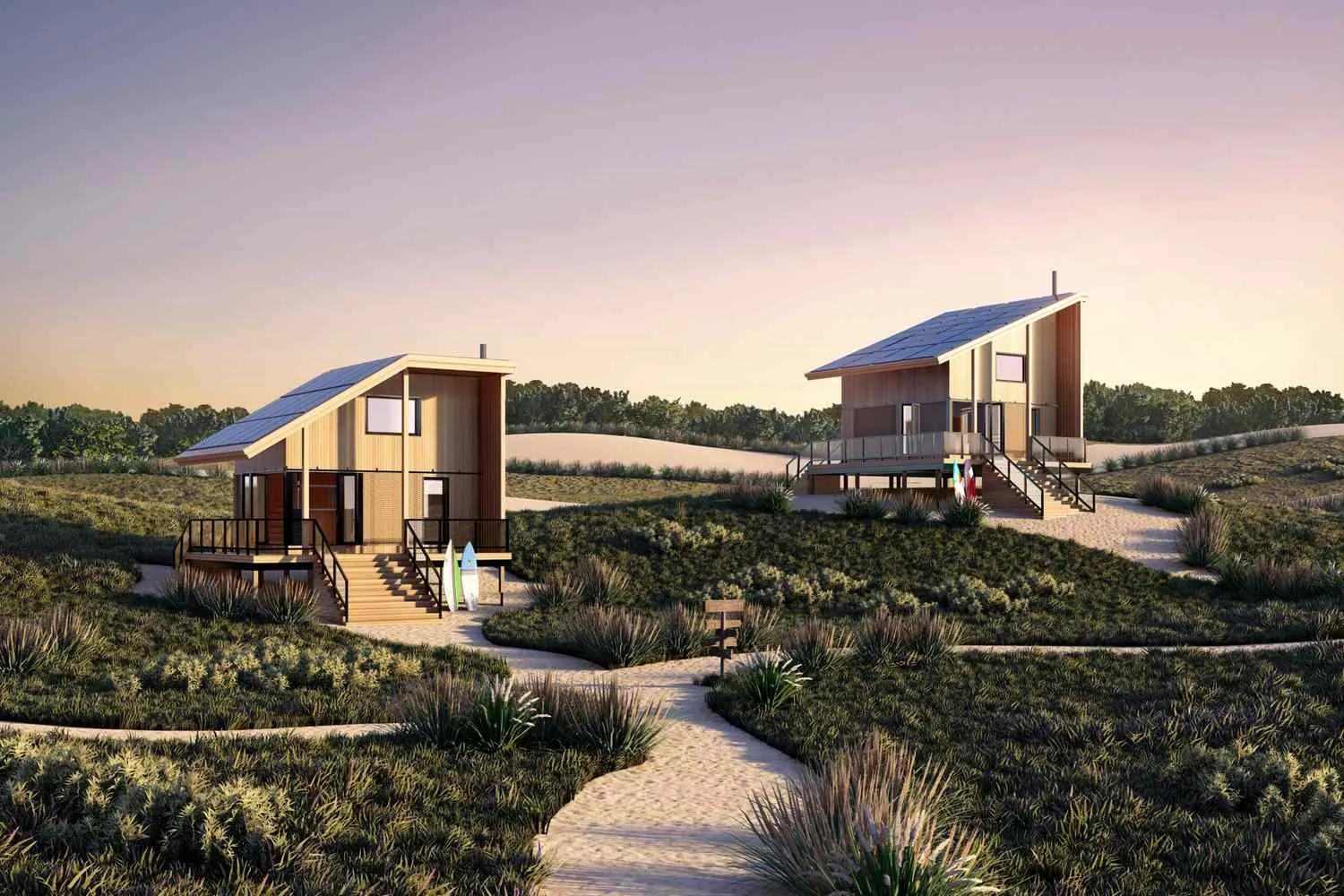
Eco-friendly roofing is an emerging trend in the construction and home improvement industries that emphasizes sustainability, energy efficiency, and environmental consciousness. With growing concerns over climate change, resource depletion, and the environmental impact of traditional roofing materials, homeowners and businesses alike are seeking alternatives that reduce carbon footprints while providing durable, long-lasting protection for buildings.
In this article, we’ll explore what eco-friendly roofing is, the materials used, the benefits of eco-conscious roofs, and how you can choose the best eco-friendly roofing option for your home or building.
What Defines Eco-Friendly Roofing?
Eco-friendly roofing refers to materials, designs, and systems that minimize negative impacts on the environment. These roofing solutions prioritize sustainability and often involve the use of recycled or renewable materials, energy-efficient technologies, and environmentally responsible production processes.
Key characteristics of eco-friendly roofing include:
- Sustainability: Made from materials that are renewable or recycled, eco-friendly roofs help reduce the depletion of natural resources.
- Energy Efficiency: These roofs are designed to minimize heat absorption, reducing energy consumption by keeping the interior of the building cooler.
- Durability: Eco-friendly roofing materials are often more durable and longer-lasting than traditional materials, which means less frequent replacements and less waste.
- Recyclability: At the end of their life cycle, many eco-friendly roofing materials can be recycled, further reducing their environmental impact.
Common Types of Eco-Friendly Roofing Materials
Eco-friendly roofing materials come in a variety of forms, each with its own set of benefits for the environment. Let’s look at some of the most popular options available today:
1. Metal Roofing
Metal roofing is one of the most popular eco-friendly roofing materials, thanks to its durability and recyclability. Metal roofs can last for 50 years or more, and they can often be made from recycled materials. At the end of their lifespan, metal roofing panels can be recycled again, reducing waste.
Additionally, metal roofs reflect heat from the sun, helping to keep homes cooler in hot weather and reducing the need for air conditioning. This heat-reflecting quality makes them an energy-efficient option for homeowners.
2. Solar Roofing
Solar roofing takes eco-friendliness to the next level by not only providing protection from the elements but also generating electricity. Solar panels or solar shingles convert sunlight into energy, reducing reliance on traditional power sources. This can lower energy bills and contribute to a reduction in greenhouse gas emissions.
While solar roofing systems require an upfront investment, they can pay for themselves over time through energy savings and government incentives, such as tax credits for renewable energy installations.
3. Green Roofs
A green roof, also known as a living roof, involves planting vegetation on the roof of a building. Green roofs provide natural insulation, reduce heat absorption, and help manage stormwater runoff. They can also improve air quality by absorbing carbon dioxide and releasing oxygen.
In urban areas, green roofs are particularly beneficial, as they reduce the “urban heat island” effect, where cities become significantly warmer than surrounding areas due to heat-absorbing materials like concrete and asphalt. Green roofs can help cool cities down while offering a natural, aesthetic element to buildings.
4. Clay and Slate Tiles
Clay and slate tiles are natural materials that have been used in roofing for centuries. These tiles are long-lasting, fire-resistant, and fully recyclable. While their production may involve some environmental impact, their longevity offsets this by reducing the need for frequent replacements.
Clay and slate tiles are particularly well-suited for areas with hot climates, as they naturally help keep homes cooler. Additionally, their timeless aesthetic appeal makes them a popular choice for homeowners seeking both functionality and beauty.
5. Recycled Shingles
Recycled shingles are made from a combination of materials such as rubber, plastic, or wood fiber, often sourced from recycled products like tires or old roofing materials. By repurposing waste products, these shingles prevent the need for virgin materials and help reduce landfill waste.
Recycled shingles offer similar performance and durability to traditional asphalt shingles, making them an eco-friendly alternative for homeowners looking for a low-maintenance, cost-effective roofing solution.
Benefits of Eco-Friendly Roofing
There are numerous benefits to choosing an eco-friendly roof for your home or business, from environmental advantages to cost savings. Here are some of the most significant benefits:
1. Reduced Environmental Impact
Eco-friendly roofing materials are often sourced from renewable or recycled resources, which helps reduce the strain on the environment. Additionally, by using roofing materials that last longer, you decrease the frequency of replacements, reducing waste and the demand for new materials.
2. Energy Savings
One of the primary benefits of eco-friendly roofing is energy efficiency. Many eco-conscious roofing materials, such as metal roofs and green roofs, are designed to reflect heat or provide insulation, reducing the need for heating and cooling. This can lead to significant savings on energy bills, particularly in regions with extreme weather conditions.
3. Durability and Longevity
Eco-friendly roofing materials are often more durable and longer-lasting than traditional options. Metal roofs, for example, can last for 50 years or more, while slate and clay tiles can last even longer. This means fewer replacements and less maintenance, saving you time, money, and resources in the long run.
4. Improved Air Quality
Green roofs, in particular, have the ability to improve air quality by absorbing pollutants and releasing oxygen. In urban areas, they also help reduce smog and contribute to cleaner, healthier living environments.
5. Government Incentives
In many regions, governments offer incentives to encourage homeowners to install eco-friendly roofing systems. These incentives may include tax credits, rebates, or grants, particularly for solar roofing and green roofs. By taking advantage of these programs, you can offset the initial cost of your eco-friendly roof installation.
How to Choose the Best Eco-Friendly Roofing Option
Choosing the right eco-friendly roofing option for your home or business depends on several factors, including your budget, location, and personal preferences. Here are some tips to help guide your decision:
1. Consider Your Climate
Different eco-friendly roofing materials perform better in different climates. For example, metal roofs are ideal for hot, sunny climates due to their heat-reflective properties, while green roofs are well-suited for urban areas with heavy rainfall.
2. Evaluate Longevity and Maintenance
Some eco-friendly roofing options, like slate and clay tiles, are highly durable but may require professional installation and periodic maintenance. Others, like recycled shingles, offer low-maintenance solutions with a similar lifespan to traditional materials.
3. Look for Certifications
When choosing eco-friendly roofing materials, look for certifications from reputable organizations that ensure the product meets environmental standards. For example, the Energy Star label can help you identify energy-efficient roofing materials.
4. Assess Your Budget
While eco-friendly roofing materials may come with a higher upfront cost, they can lead to significant long-term savings in terms of energy efficiency, durability, and potential government incentives. Be sure to factor in these savings when evaluating your options.
Conclusion
Eco-friendly roofing represents the future of sustainable construction, offering benefits that extend beyond environmental responsibility. Whether you choose solar panels, green roofs, or recycled materials, an eco-friendly roof can enhance the energy efficiency of your home, reduce your carbon footprint, and contribute to a healthier planet. As awareness of environmental issues continues to grow, eco-conscious roofing solutions will become increasingly important for homeowners and businesses alike.
By understanding the various eco-friendly roofing options available and considering factors like climate, budget, and energy efficiency, you can make an informed decision that benefits both your home and the environment.







Leave a Reply